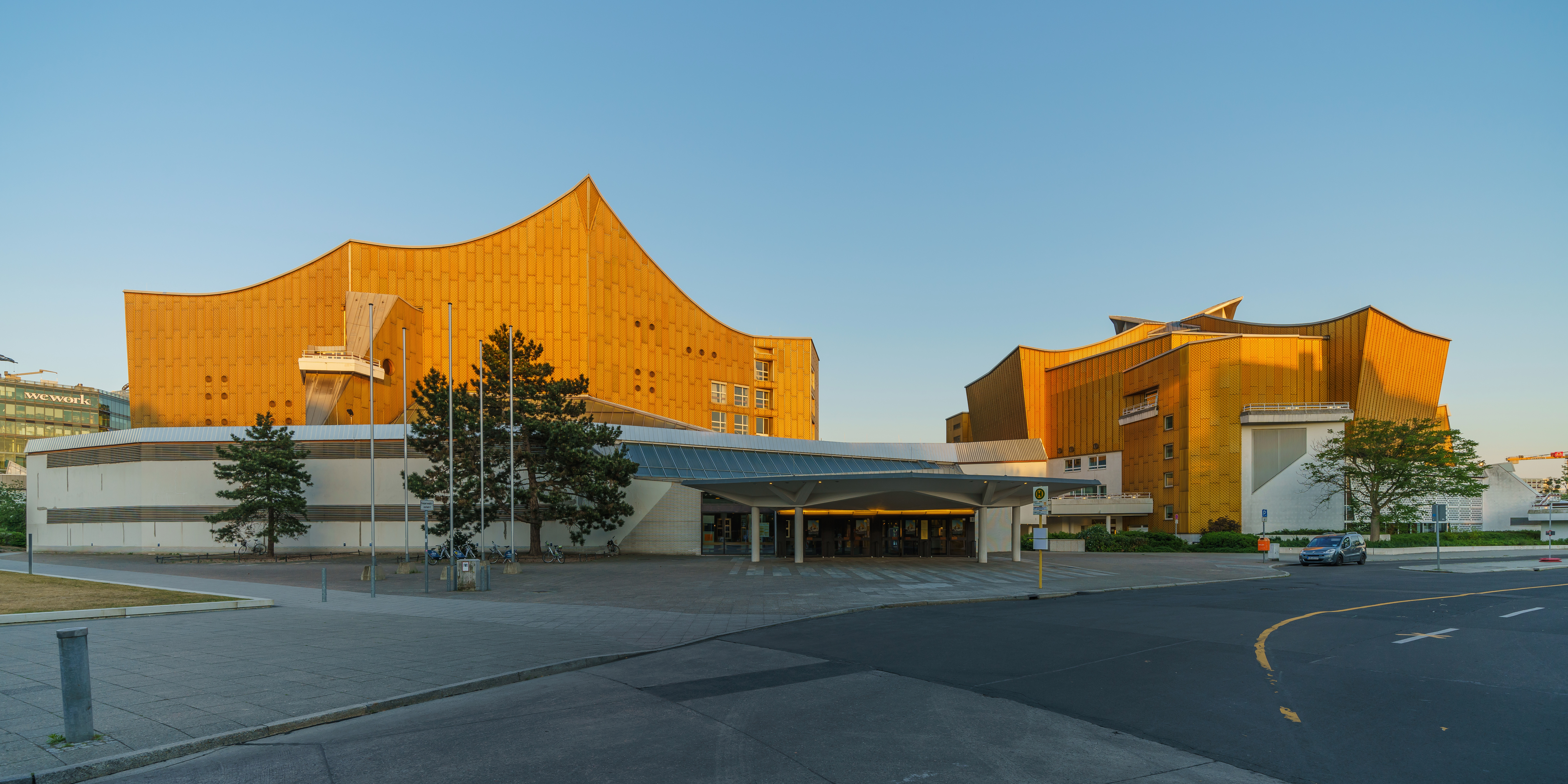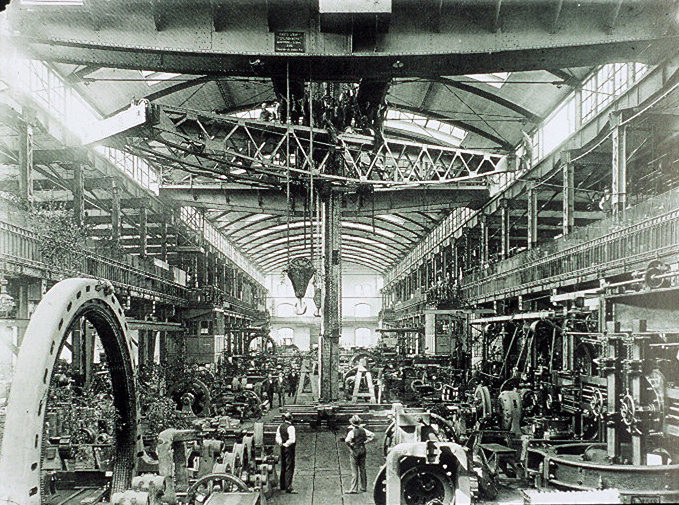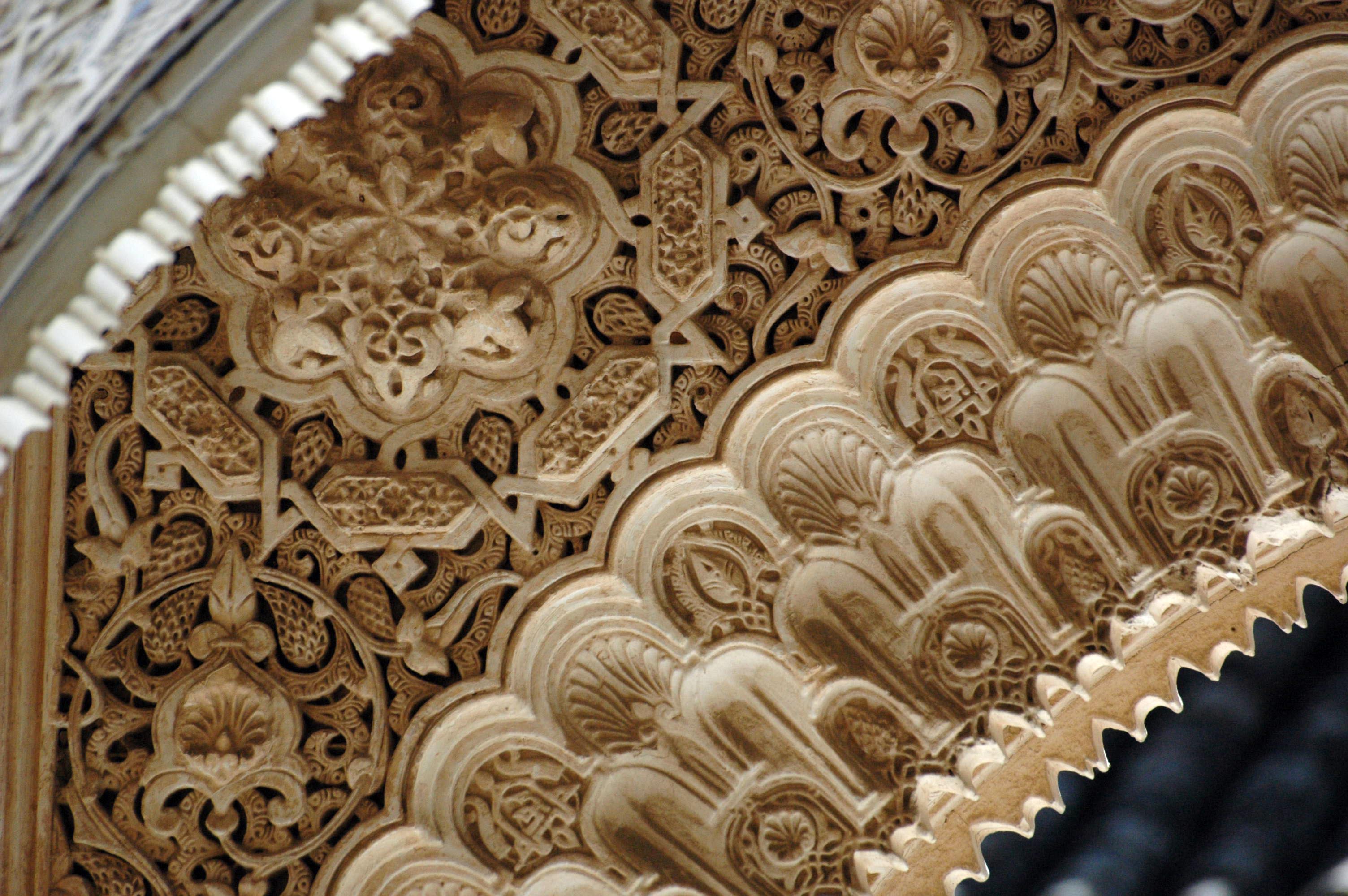|
State Museums Of Berlin
The Berlin State Museums (german: Staatliche Museen zu Berlin) are a group of institutions in Berlin, Germany, comprising seventeen museums in five clusters, several research institutes, libraries, and supporting facilities. They are overseen by the Prussian Cultural Heritage Foundation and funded by the German federal government in collaboration with Germany's federal states. The central complex on Museum Island was added to the UNESCO list of World Heritage Sites in 1999. By 2007, the Berlin State Museums had grown into the largest complex of museums in Europe. The museum was originally founded by King Friedrich Wilhelm III of Prussia in 1823 as the Königliche Museen (in English, Royal Museums). The director-general of the Berlin State Museums is Michael Eissenhauer. Museum locations Berlin-Mitte * Museum Island ** Altes Museum: Roman and Greek Classical Antiquities ** Alte Nationalgalerie: 19th century sculptures and paintings. ** Bode-Museum: the Numismatic Co ... [...More Info...] [...Related Items...] OR: [Wikipedia] [Google] [Baidu] |
Bode-Museum
The Bode-Museum (English: ''Bode Museum''), formerly called the Kaiser-Friedrich-Museum (''Emperor Frederick Museum''), is a listed building on the Museum Island in the Mitte (locality), historic centre of Berlin. It was built from 1898 to 1904 by order of German Emperor William II German Emperor, William II according to plans by Ernst von Ihne in Baroque Revival architecture, Baroque Revival style. The building's front square featured a memorial to German Emperor Frederick III, German Emperor, Frederick III, which was destroyed by the East Germany, East German authorities. Currently, the Bode-Museum is home to the Skulpturensammlung, the Museum für Byzantinische Kunst and the Münzkabinett (sculpture, coins and medals, and Byzantine art). As part of the Museum Island complex, the Bode-Museum was inscribed on the UNESCO World Heritage List in 1999 because of its outstanding architecture and testimony to the development of museums as a cultural phenomenon in the late 19th and earl ... [...More Info...] [...Related Items...] OR: [Wikipedia] [Google] [Baidu] |
Sculpture
Sculpture is the branch of the visual arts that operates in three dimensions. Sculpture is the three-dimensional art work which is physically presented in the dimensions of height, width and depth. It is one of the plastic arts. Durable sculptural processes originally used carving (the removal of material) and modelling (the addition of material, as clay), in stone, metal, ceramic art, ceramics, wood and other materials but, since Modernism, there has been an almost complete freedom of materials and process. A wide variety of materials may be worked by removal such as carving, assembled by welding or modelling, or Molding (process), moulded or Casting, cast. Sculpture in stone survives far better than works of art in perishable materials, and often represents the majority of the surviving works (other than pottery) from ancient cultures, though conversely traditions of sculpture in wood may have vanished almost entirely. However, most ancient sculpture was brightly painted, ... [...More Info...] [...Related Items...] OR: [Wikipedia] [Google] [Baidu] |
Kulturforum
The Kulturforum ( en, Cultural Forum) is a collection of cultural buildings in Berlin. It was built up in the 1950s and 1960s at the edge of West Berlin, after most of the once unified city's cultural assets had been lost behind the Berlin Wall. The Kulturforum is characterized by its innovative modernist architecture; several buildings are distinguished by the organic designs of Hans Scharoun, and the Neue Nationalgalerie was designed by Mies van der Rohe. Today, the Kulturforum lies immediately to the west of the redeveloped commercial node of Potsdamer Platz. Cultural institutions Among the cultural institutions housed in and around the Kulturforum are: *Neue Nationalgalerie * Gemäldegalerie *Kunstgewerbemuseum Berlin (Museum of Decorative Arts) * Musical Instrument Museum * Kupferstichkabinett (Print room) *Kunstbibliothek Berlin (Berlin Art Library) *Berliner Philharmonie * Chamber Music Hall *Berlin State Library ''Haus Potsdamer Straße'' *Ibero-American Institute * Wis ... [...More Info...] [...Related Items...] OR: [Wikipedia] [Google] [Baidu] |
Moabit
Moabit () is an inner city locality in the borough of Mitte, Berlin, Germany. As of 2016, around 77,000 people lived in Moabit. First inhabited in 1685 and incorporated into Berlin in 1861, the former industrial and working-class neighbourhood is fully surrounded by three watercourses, which define its present-day border. Between 1945 and 1990, Moabit was part of the British sector of West Berlin and directly bordered East Berlin. Until the administrative reform in 2001, Moabit was a part of the district of Tiergarten. Colloquially, the name ''Moabit'' also refers to the Central Criminal Court (''Strafgericht'') and detention centre, which deals with all criminal cases in Berlin and is based in Moabit. Name The origin of the name ''Moabit'' is disputed. According to one account, it can be traced back to the Huguenots, in the time of King Frederick William I of Prussia. These French refugees are said to have named their new residence in reference to the Biblical description ... [...More Info...] [...Related Items...] OR: [Wikipedia] [Google] [Baidu] |
Tiergarten (Berlin)
Tiergarten (, literally ''Animal Garden'', historically for ''Deer Garden'') is a locality within the borough of Mitte, in central Berlin (Germany). Notable for the great and homonymous urban park, before German reunification, it was a part of West Berlin. Until Berlin's 2001 administrative reform, Tiergarten was also the name of a borough (Bezirk), consisting of the current locality (''Ortsteil'') of Tiergarten (formerly called ''Tiergarten-Süd'') plus Hansaviertel and Moabit. A new system of road and rail tunnels runs under the park towards Berlin's main station in nearby Moabit. History Historical notes Once a hunting ground of the Electors of Brandenburg the ''Großer Tiergarten'' park of today was designed in the 1830s by landscape architect Peter Joseph Lenné. In the course of industrialization in the 19th century, a network of streets was laid out in the Hobrecht-Plan in an area that came to be known architecturally as the Wilhelmine Ring. In 1894 the Reichstag b ... [...More Info...] [...Related Items...] OR: [Wikipedia] [Google] [Baidu] |
Friedrichswerder Church
Friedrichswerder Church (german: Friedrichswerdersche Kirche, french: Temple du Werder) was the first Neo-Gothic church built in Berlin, Germany. It was designed by an architect better known for his Neoclassical architecture, Karl Friedrich Schinkel, and was built under his direction from 1824 to 1831. The building is maintained by the Prussian Cultural Heritage Foundation and is part of the Berlin State Museums' ensemble. In late 2012, the building was closed due to structural damage caused by nearby construction. After extensive restoration work completed in early October 2019, the damage was repaired and exhibitions from the Alte Nationalgalerie (the Old National Gallery) returned. These include a collection of nineteenth-century German sculptures, showing works of Johann Gottfried Schadow, Karl Friedrich Schinkel and Christian Daniel Rauch, among others. On the upper floor is an exhibition of the work and life of Karl Friedrich Schinkel. References Gallery Berlin church of ... [...More Info...] [...Related Items...] OR: [Wikipedia] [Google] [Baidu] |
Archive
An archive is an accumulation of historical records or materials – in any medium – or the physical facility in which they are located. Archives contain primary source documents that have accumulated over the course of an individual or organization's lifetime, and are kept to show the function of that person or organization. Professional archivists and historians generally understand archives to be records that have been naturally and necessarily generated as a product of regular legal, commercial, administrative, or social activities. They have been metaphorically defined as "the secretions of an organism", and are distinguished from documents that have been consciously written or created to communicate a particular message to posterity. In general, archives consist of records that have been selected for permanent or long-term preservation on grounds of their enduring cultural, historical, or evidentiary value. Archival records are normally unpublished and almost alway ... [...More Info...] [...Related Items...] OR: [Wikipedia] [Google] [Baidu] |
Ancient Near East
The ancient Near East was the home of early civilizations within a region roughly corresponding to the modern Middle East: Mesopotamia (modern Iraq, southeast Turkey, southwest Iran and northeastern Syria), ancient Egypt, ancient Iran ( Elam, Media, Parthia and Persis), Anatolia/Asia Minor and the Armenian highlands (Turkey's Eastern Anatolia Region, Armenia, northwestern Iran, southern Georgia, and western Azerbaijan), the Levant (modern Syria, Lebanon, Israel, Palestine, and Jordan), Cyprus and the Arabian Peninsula. The ancient Near East is studied in the fields of Ancient Near East studies, Near Eastern archaeology and ancient history. The history of the ancient Near East begins with the rise of Sumer in the 4th millennium BC, though the date it ends varies. The term covers the Bronze Age and the Iron Age in the region, until either the conquest by the Achaemenid Empire in the 6th century BC, that by the Macedonian Empire in the 4th century BC, or the Muslim conquest ... [...More Info...] [...Related Items...] OR: [Wikipedia] [Google] [Baidu] |
Islamic Art
Islamic art is a part of Islamic culture and encompasses the visual arts produced since the 7th century CE by people who lived within territories inhabited or ruled by Muslim populations. Referring to characteristic traditions across a wide range of lands, periods, and genres, Islamic art is a concept used first by Western art historians since the late 19th century. Public Islamic art is traditionally non- representational, except for the widespread use of plant forms, usually in varieties of the spiralling arabesque. These are often combined with Islamic calligraphy, geometric patterns in styles that are typically found in a wide variety of media, from small objects in ceramic or metalwork to large decorative schemes in tiling on the outside and inside of large buildings, including mosques. Other forms of Islamic art include Islamic miniature painting, artefacts like Islamic glass or pottery, and textile arts, such as carpets and embroidery. The early developments of Isla ... [...More Info...] [...Related Items...] OR: [Wikipedia] [Google] [Baidu] |
Antikensammlung Berlin
The Antikensammlung Berlin (Berlin antiquities collection) is one of the most important collections of classical art in the world, now held in the Altes Museum and Pergamon Museum in Berlin, Germany. It contains thousands of ancient archaeological artefacts from the ancient Greek, Roman, Etruscan and Cypriot civilizations. Its main attraction is the Pergamon Altar and Greek and Roman architectural elements from Priene, Magnesia, Baalbek and Falerii. In addition, the collection includes a large number of ancient sculptures, vases, terracottas, bronzes, sarcophagi, engraved gems and metalwork. History of the collection Foundation The collection's foundations were laid in the time of the Brandenburg Elector Friedrich Wilhelm I by ancient sculptures looted in 1656 from the ''Villa Regia'' Palace in Warsaw. The obtained sculptures were purchased in Italy by Polish kings Sigismund III Vasa and Władysław IV Vasa. This core of the collection, originally housed at the Berlin City ... [...More Info...] [...Related Items...] OR: [Wikipedia] [Google] [Baidu] |
Pergamon Museum
The Pergamon Museum (; ) is a listed building on the Museum Island in the historic centre of Berlin. It was built from 1910 to 1930 by order of German Emperor Wilhelm II according to plans by Alfred Messel and Ludwig Hoffmann in Stripped Classicism style. Landesdenkmalamt Berlin As part of the Museum Island complex, the Pergamon Museum was inscribed on the in 1999 because of its architecture and testimony to the evolution of museums as architectural and social phenomena.< ... [...More Info...] [...Related Items...] OR: [Wikipedia] [Google] [Baidu] |
Museum Für Vor- Und Frühgeschichte (Berlin)
The Museum für Vor- und Frühgeschichte (''"Museum for prehistory and early history"''), part of the Berlin State Museums, is one of major archaeological museums of Germany, and among the largest supra-regional collections of prehistoric finds in Europe. It was previously located in the former theatre building by Carl Ferdinand Langhans, next to Schloss Charlottenburg, and encompasses six exhibition halls on three floors. Since October 2009, the museum's exhibitions are now displayed in the Neues Museum on Museum Island. Apart from a permanent exhibition, it regularly houses temporary exhibits. Attached to the museum is a specialised library on prehistoric archaeology with over 50,000 volumes. Furthermore, the museum houses the ''Commission for the exploration of archaeological collections and documents from northeast Central Europe'', a project for the study of ancient Egyptian calendars, and a number of other bodies. History The collection goes back to the Cabinet of curi ... [...More Info...] [...Related Items...] OR: [Wikipedia] [Google] [Baidu] |








